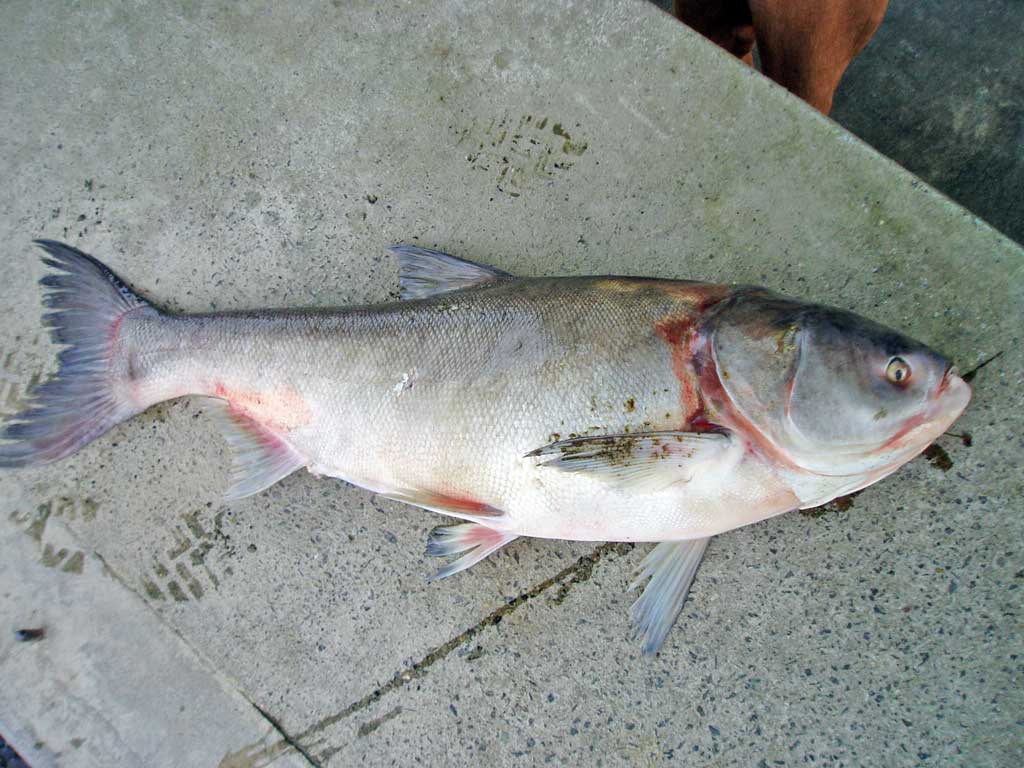January
Senate EPW Committee Leaders Anticipate New WRDA Proposal Within Weeks
The Environment and Public Works Committee held a hearing focusing on the Harbor Maintenance Trust Fund, laying the groundwork its consideration of a bipartisan Water Resources Development Act, or "WRDA," this year.
February
EPA Solicits Comments on 2014-2016 National Enforcement Initiatives
The 2014-16 proposed Environmental Protection Agency national enforcement initiatives largely mirror those developed for the 2011-2013 fiscal years, and, from a water standpoint, include municipal infrastructure - "addressing sewage discharges from combined sewer systems, sanitary sewer systems, and municipal separate storm sewer systems;" and preventing runoff from Concentrated Animal Feeding Operations (or "CAFOs") from contaminating ground and surface water.
Study Documents Loss of 1.3 Million Acres of Grassland Over 5-Year Period in Parts of Corn Belt
Based upon land cover data from the National Agricultural Statistics Service Cropland Data Layer, used to assess grassland conversion from 2006 to 2011, in the US Corn Belt, a recent doubling in commodity prices has created incentives for landowners to convert grassland to corn and soybean cropping.
March
Mayors from along the length of the Mississippi River gathered in Washington, DC to advance their newly-developed, River-centric agenda in the halls of Congress and among federal agencies. Mayors representing the Mississippi River Cities and Towns Initiative scheduled various meetings and public events for March 19 through 21 to formally announce and promote the Initiative's policy goals. Meetings to discuss the Initiative's River-based agenda were held between the mayors and Congressional leaders in both the House and Senate, as well as with White House staff and representatives of the U.S. Army Corps of Engineers.
Asian carp management in the Mississippi River Basin was the main topic of discussion at a March 6, Capitol Hill "Asian Carp Awareness Symposium" held during National Invasive Species Awareness Week and Great Lakes Days. The Symposium focused on Federal, state, local, nonprofit and private coordinating efforts and responses to combat invasive Asian carp in the Ohio River, Upper Mississippi River, Lower Mississippi River, Missouri River and Great Lakes basins. Legislation recently introduced in the U.S. House and Senate was also addressed by several Symposium speakers, including two sponsors of one of those bills, who stressed that the legislation would assist Asian carp control efforts.
April
Heavy rains falling on already-saturated ground lead to widespread flooding along the Mississippi, Missouri and Illinois Rivers and other areas in the Upper Mississippi River Basin
On April 17, the river conservation organization American Rivers released its annual America’s Most Endangered Rivers list, "a list of ten rivers facing urgent threats that call for our immediate, decisive action." In the Mississippi River Basin, the Little Plover River (in Wisconsin) and Niobrara River (in Nebraska, South Dakota and Wyoming) were highlighted among the top-ten threatened rivers.
May
The U.S. Senate passed its version of the Water Resources Development Act on May 15. Commonly known as "WRDA," the legislation is a huge public works bill that periodically authorizes flood control, navigation, and water resource projects and studies by the U.S. Army Corps of Engineers. There are numerous bill provisions that impact water resources nationwide, many of which are contentious. The bill's so-called project "streamlining provisions" are particularly contentious and opposed by many environmental organizations, lawyer groups, and state wetlands and floodplain managers. In addition to sections of the bill of a more national scope, the Senate-passed measure contains several provisions that directly reference and would impact Mississippi River Basin and Gulf Coast waters.
The Minnesota Pollution Control Agency released a report citing croplands as the primary contributor to the state's high and increasing surface water nitrate concentrations.
House Fails to Pass Farm Bill
The timing of the Minnesota report ironically followed by a week the failure by the U.S. House to pass a comprehensive five-year farm bill (a bill that includes conservation provisions that would help mitigate nitrate loading from farmland into streams).
July
On July 19, the U.S. Geological Survey (USGS) reported on findings regarding the ecological health of the Nation’s streams during a briefing at the U.S. Capitol. USGS National Water Quality Assessment (NAWQA) Program and state environmental agency representatives described the results and implications of a national assessment on stream health, reporting that 83 percent of assessed streams across the country exhibit some degradation. Steam health is often reduced because of multiple factors, including increased temperatures, nutrient pollution or pesticide pollution.
Large 2013 Gulf of Mexico Dead Zone Measured, But Smaller Than Predicted
The 2013 summer Gulf of Mexico “dead zone” was measured at 5,840 square miles; roughly the size of Connecticut, according to the National Oceanic and Atmospheric Administration. While a wet spring and associated surface water runoff carried considerable nitrogen from farmlands, and it was projected to result in the formation of a large dead zone this summer, windy conditions in the Gulf oxygenated the waters, limiting its size to just slightly above average.
Large 2013 Gulf of Mexico Dead Zone Measured, But Smaller Than Predicted
The 2013 summer Gulf of Mexico “dead zone” was measured at 5,840 square miles; roughly the size of Connecticut, according to the National Oceanic and Atmospheric Administration. While a wet spring and associated surface water runoff carried considerable nitrogen from farmlands, and it was projected to result in the formation of a large dead zone this summer, windy conditions in the Gulf oxygenated the waters, limiting its size to just slightly above average.
August
The Minnesota Department of Natural Resources announced on August 22 that its staff observed the carcass of a silver carp on a concrete abutment just below Mississippi River Lock and Dam 5, about 20 miles farther upstream than the previously northernmost instance of the species.
Following July's release of the U.S. Army Corps of Engineers' long-awaited draft St. John's Bayou-New Madrid Floodway project environmental impact statement (concerning its controversial plan to close a gap in the Mississippi River levee system in southern Missouri), the Corps of Engineers held two public meetings regarding the project on August 27 and 28, in East Prairie, Missouri and Cairo, Illinois.
September
A crowded legislative and rhetorical agenda meant that Congress had limited time and little attention to give to large, complicated pieces of legislation that impact the Mississippi River Basin environment over the remainder of 2013; bills such as the farm bill and Water Resources Development Act (or WRDA).
Environmental advocates in states along the Mississippi River won a major legal victory along the road toward reaching their long-term goal of having federal standards regulating farmland runoff, when U.S. District Judge Jay Zainey gave the Environmental Protection Agency six months to decide whether to set Clean Water Act standards for nitrogen and phosphorous in all U.S. waterways or explain why they're not needed.
October
On October 30, the U.S. Geological Survey (USGS) reported that Illinois River nitrate levels decreased by 21 percent between 2000 and 2010, marking the first time that substantial, multi-year decreases in nitrate were observed in the Mississippi River Basin since 1980, according to a new National Water-Quality Assessment (NAWQA) Program study. NAWQA evaluated nitrate concentrations and flux from 1980 through 2010 at eight sites in the Mississippi River Basin as part of the study. Nitrate decreases were also noted in the Iowa River during the same time period; although the decline was not as large (10 percent). Similar declines were not widespread in the water basin, however. Nitrate levels continue to increase in the Missouri and Mississippi Rivers, including the Mississippi’s outlet to the Gulf of Mexico.
On October 23 the House overwhelmingly passed the "Water Resources Reform and Development Act" (H.R. 3080) on a 417-3 roll call vote. Known as "WRRDA," the legislation is an $8.2 billion public works bill that authorizes flood control, navigation, and water resource projects, maintenance and studies by the U.S. Army Corps of Engineers. The bill's passage set the stage for the formation of a House-Senate conference committee to resolve differences between the House WRRDA bill and a companion Water Resources Development Act (S. 601) (or WRDA) bill passed by the Senate in May.
November
The Environmental Protection Agency filed paperwork to appeal a federal judge's order that the agency formally decide whether numeric standards are needed for nutrient pollution in the Mississippi River Basin. In September, U.S. District Judge Jay Zainey in New Orleans ruled that EPA was allowed to look at the costs and administrative burden in deciding whether to implement numeric limits, but that the agency did ultimately have to decide whether they were needed.
December
"2013" Farm and Water Resources Bills Slip Into 2014
Although farm bill negotiators reported that they made significant progress on their way toward settling a variety of differences, the main negotiators admitted that they would not reach agreement on a conference committee bill before the House recessed on December 13 for the year. In various statements, the Congressional agriculture leaders expressed confidence that the conference committee tasked with forging a compromise farm bill could do so in January, 2014. Meanwhile, lawmakers heading up the Water Resources Development Act (WRDA) conference committee admitted that WRDA, like the farm bill, will be dealt with in 2014. Senate Environment and Public Works Chairwoman Barbara Boxer (D-CA) and ranking member David Vitter (R-LA) blamed House negotiators' inflexibility for the delay in finalizing a compromise bill.






No comments:
Post a Comment